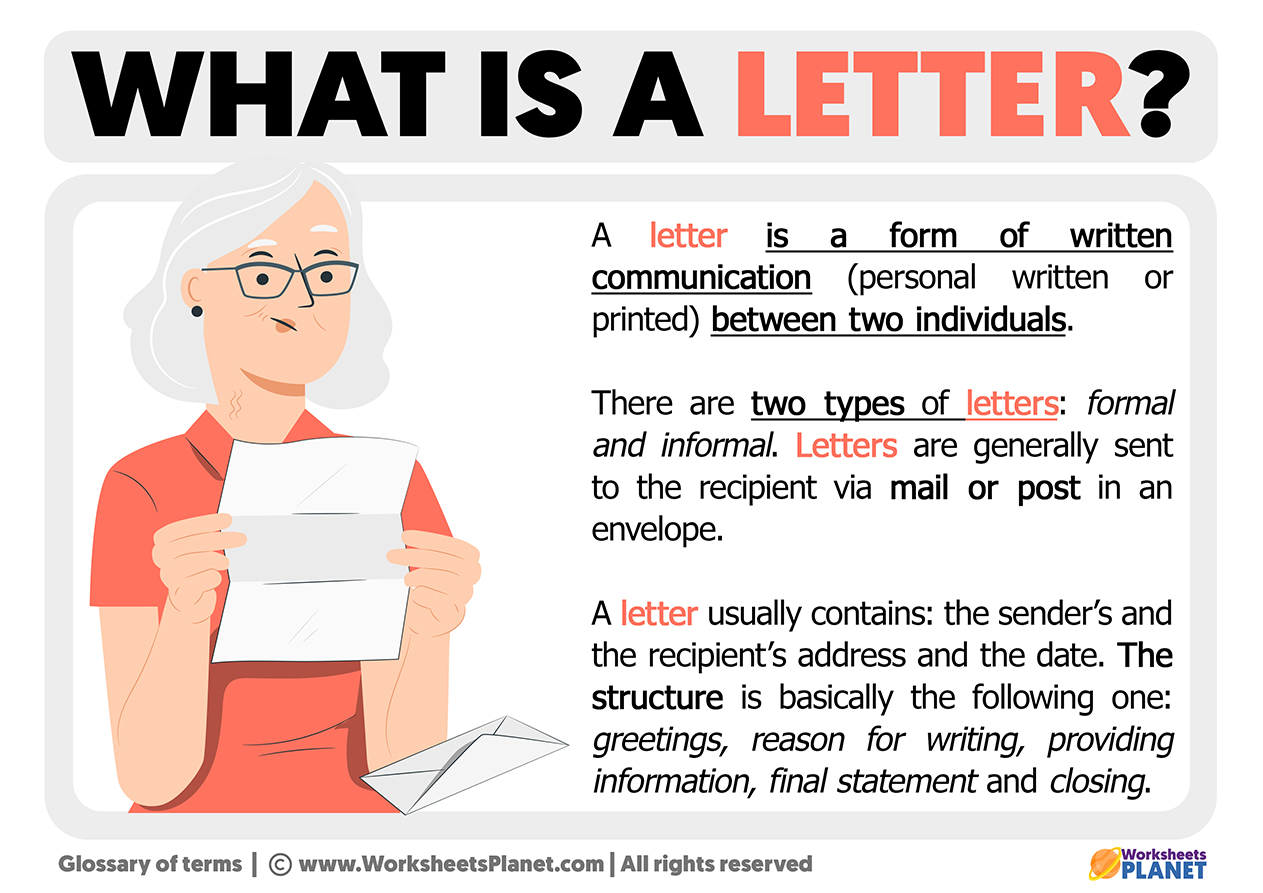A letter is a written message that is typically sent from one person to another, often through the mail. It can be used for a variety of purposes, such as conveying personal thoughts and feelings, conducting business or formal communication, or expressing gratitude or appreciation.

A letter usually consists of several parts, including a heading with the sender’s address and date, a greeting or salutation, a body that contains the message, a closing or sign-off, and the sender’s signature. Letters can be written by hand or typed, and may include additional elements such as enclosures or postscripts.
Types of letters
Letters are used for a variety of purposes. They can be used to convey personal thoughts and emotions, conduct business and formal communication, express gratitude or appreciation, and more. We can find some examples:
- Personal letters – Used for informal communication between friends, family, or acquaintances.
- Business letters – Used for formal communication between companies, organizations, or individuals.
- Formal letters – Used for official communication, such as with government agencies or legal matters.
- Informal letters – Used for casual communication, often with a less formal tone.
- Cover letters – Used for job applications to introduce oneself and highlight relevant skills and experience.
- Thank-you letters – Used to express gratitude or appreciation for a gift, opportunity, or gesture.
- Complaint letters – Used to express dissatisfaction or concerns about a product or service.
- Inquiry letters – Used to request information or ask questions.
- Recommendation letters – Used to endorse someone for a job, scholarship, or other opportunity.
- Love letters – Used to express romantic feelings or emotions.
The different parts of a letter include:
- Heading – This is typically located at the top of the page and contains the sender’s address and the date the letter was written.
- Inside Address – This includes the recipient’s name and address. It is usually placed a few lines below the heading and aligned with the left margin.
- Salutation – This is the greeting that is used to address the recipient, such as “Dear Mr. Kimmel” or “To Whom It May Concern.”
- Body – This is the main content of the letter and typically contains several paragraphs. It should be organized and easy to read.
- Closing – This is the part of the letter that signals the end of the message and includes a sign-off, such as “Sincerely” or “Best regards.”
- Signature – This is the sender’s name or signature, which is usually placed below the closing.
- Enclosures – This is a list of any additional documents that are included with the letter.
- Postscript – This is an optional section that is added after the signature and allows the sender to add any additional information that was not included in the main body of the letter.

